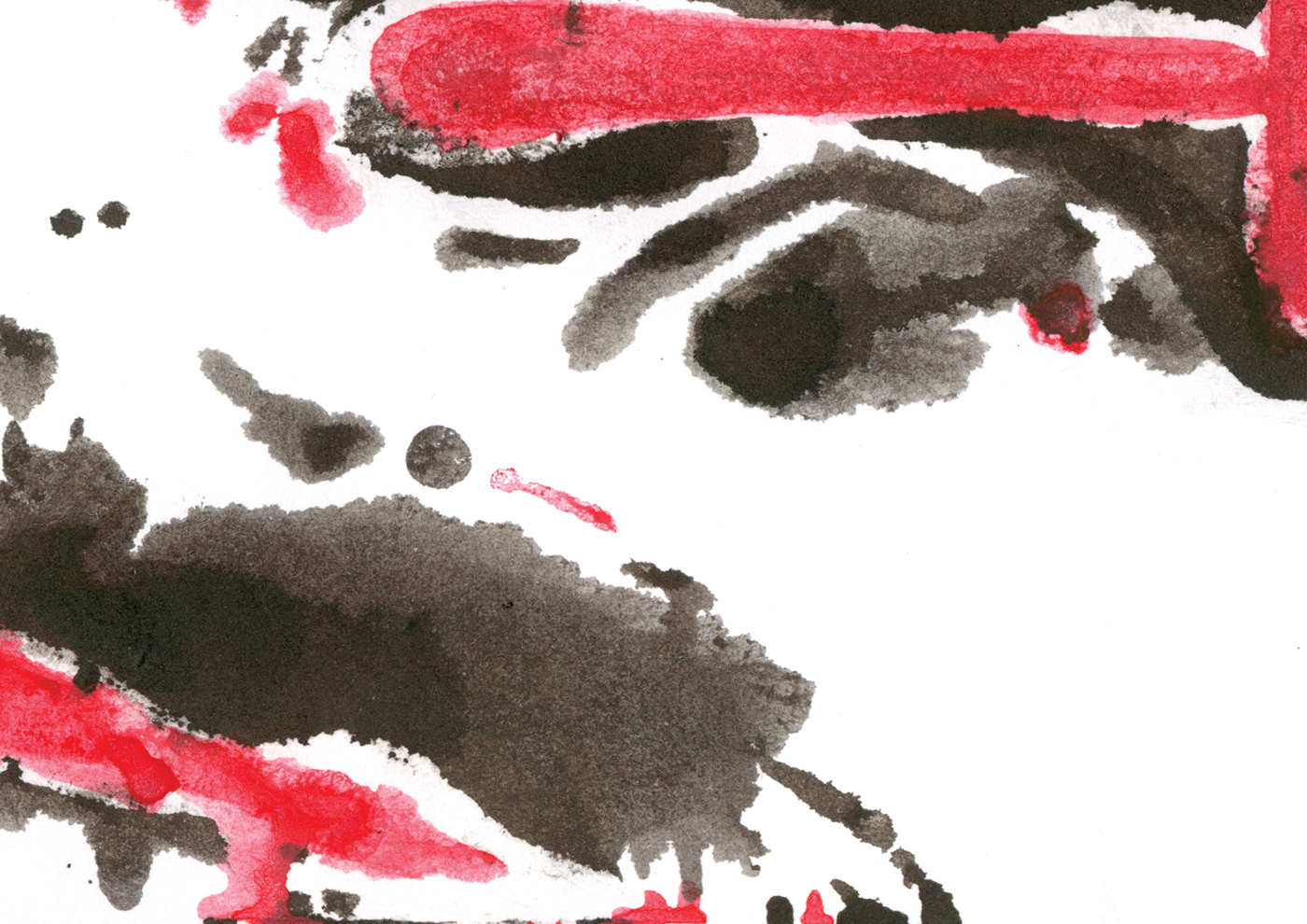Brief
This project entails typographic experimentation – finding undiscovered, inventive, nonconventional forms of typography. We were asked to reinvent the fundamentals of typography, and encouraged to think differently . The publication involved a A4 photo-type publication, containing 8 double page spreads. The spreads had to contain the following; a word flyer, typographic expression, type in motion, photo type, invented type system, composition with found typography and a typographic pattern. The publication is based on the theme: through my eyes.

Inkblot, also known as Rorschach, is a psychological test that determines the unique personality, characteristics and emotional function of a individual. First used by Herman Rorschach in 1921, the inkblot has become a well-known image. Each perfectly bilateral inkblot can have many variables. This publication explores the possibility of Rorschach as a typeface.


The letterforms create connotations unique to every perceiver – making this experimental typeface personal and unconventional. The invented type system as seen above, consists out of nine symbols. Characters can be identified by the distinctive red markings. Every sign has unique optical characteristics yet they form a recognisable set.


The word flyer aims to visually portray the concept behind the Rorschach typeface. The invented type system is used to write the Afrikaans word for look, which is “kyk”, followed by the phrase “what do you see?”. The viewer is invited to make their own interpretation of the typeface.

Printed images and art pieces can be defined as nothing but various pigments absorbed by paper. But what would art be if these fundamentals were shifted? The photo type poster explores the idea of what we perceive images to be – and what they truly are. The added phrase supports this idea.



Just as the Rorschach type is uniquely perceived, the palm and fingerprint can be individually linked to persons. The letter A is transformed into time-based piece by recreating it on the palm of an individual.


The time-lapse photographs show the movement of the letter in a 3d manner. Rorschach and fingerprints are linked by their individuality - both explore and represent the unique characteristics of a person.

“Mix”, a word frowned upon when referring to the ethnic divide in South Africa. This issue is typographically demonstrated by capturing the word “mix” through a kaleidoscope. Individuals can experience the mixing of letters and colours through the kaleidoscope’s reflection.


So, what did you see?







